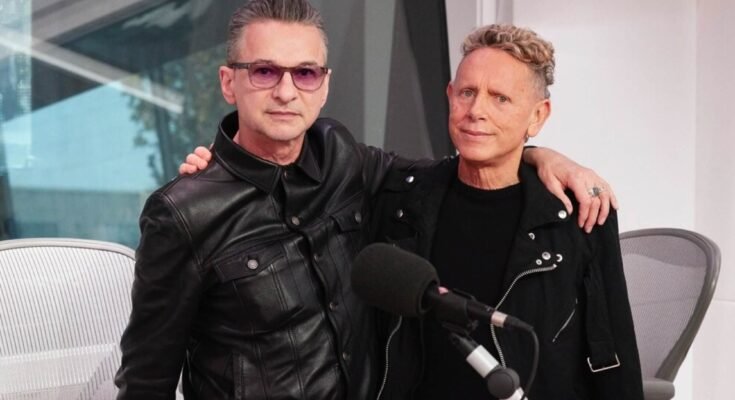Knox Chandler may not be a household name, but his guitar has echoed through some of the most iconic alternative, pop, and post-punk music of the last four decades. A quintessential collaborator and sonic architect, Chandler has spent much of his career enhancing and transforming the work of others—his name buried in liner notes, his sound essential to the music. Having played pivotal roles in bands like Depeche Mode, Psychedelic Furs, and Siouxsie & the Banshees, as well as working with pop superstar Cyndi Lauper, Chandler is now stepping into the spotlight with a long-anticipated solo venture.
The Invisible Virtuoso
Born in 1958 in the U.S., Chandler came up in the fertile post-punk and New Wave scene of the late 1970s and early ’80s. His musical education, both academic and experiential, allowed him to quickly become known for his versatility. Whether layering swirling textures, punching out jagged riffs, or building lush orchestrations with cello and electronics, Chandler developed a sound that was atmospheric yet anchored in emotional weight.
His early work with The Psychedelic Furs helped define their lush, sometimes gritty aesthetic. Chandler joined the Furs during the band’s second wave in the mid-1980s, contributing to the sound of albums like Midnight to Midnight (1987). He helped amplify the romantic melancholy of Richard Butler’s vocals with textural, chorus-drenched guitar lines—a stylistic hallmark of the era.
From there, Chandler’s reputation as a go-to sonic sculptor spread. In the early 1990s, he worked with Siouxsie & the Banshees during the twilight of their career, performing on the The Rapture (1995) album. His work with Siouxsie Sioux pushed him deeper into orchestral and experimental territory. That same spirit of adventurousness led him to briefly join Depeche Mode on tour, standing in during a particularly transitional time in the band’s history—filling a key gap in the wake of Alan Wilder’s departure. Chandler’s understanding of atmosphere and his ability to blend analog emotion with digital precision made him a natural fit.
Collaborating with Cyndi Lauper: A Pop Departure
Despite being closely associated with darker, artier acts, Chandler’s adaptability was on full display when he teamed up with Cyndi Lauper, lending his skills as a guitarist and arranger. Lauper, known for her eclectic range and theatricality, benefited from Chandler’s ability to color outside the lines. Their collaboration showed Chandler’s pop sensibilities—how he could serve the song without overloading it, giving it just the right amount of tension and lift.
“Working with Cyndi taught me about space, timing, and performance,” Chandler once remarked in an interview. “She’s such an emotional performer, and she challenged me to not just play notes, but to mean them.”
Reinvention and Reclamation
Now, after years of shaping other people’s sounds, Knox Chandler is reclaiming his own musical voice. His solo work promises to be a convergence of everything he’s absorbed over the decades—a tapestry of ambient soundscapes, angular post-punk energy, and emotionally raw instrumentation.
He’s not going into this endeavor lightly. “Going solo now isn’t about ego—it’s about finally expressing ideas I’ve carried with me for years, sometimes decades,” Chandler recently said. “I’ve played on other people’s records, helped them build their visions. Now it’s time to explore mine.”
His debut solo album, expected to release later this year, reportedly blends elements of neo-classical guitar, experimental electronics, and ambient drone—think Brian Eno meets My Bloody Valentine, but with the melodic intuition of David Sylvian. Chandler is also expected to incorporate cello and found sounds, returning to his roots in avant-garde composition.
Beyond the Spotlight
Even as he moves into a solo career, Chandler hasn’t abandoned his ethos of collaboration. His upcoming album features guest appearances from musicians he’s worked with over the years—some big names, some obscure, all handpicked for their ability to contribute to Chandler’s evolving vision.
One track features a spoken-word performance by Richard Butler, another a haunting synth contribution from a member of the extended Depeche Mode family. There’s talk of a live show that will be part concert, part installation—melding visuals, performance art, and immersive sound design.
The Legacy of a Musical Chameleon
In an industry that often celebrates the loudest voices and the brightest lights, Knox Chandler’s journey is a testament to the enduring value of the quiet craftsman—the person behind the scenes who makes everyone else sound better. As he takes center stage, there’s a growing sense that this solo project will not be a mere footnote in his career, but a culmination.
Chandler’s story is not just about stepping out of the shadows—it’s about showing that the shadows are where some of the most beautiful things are made. With a lifetime of influence and innovation behind him, his solo work isn’t just a new chapter—it’s the book he’s been waiting to write all along.
And now, finally, the world gets to read it.
Would you like me to create a social media teaser or press release for this solo debut as well?



